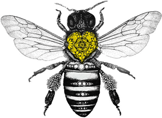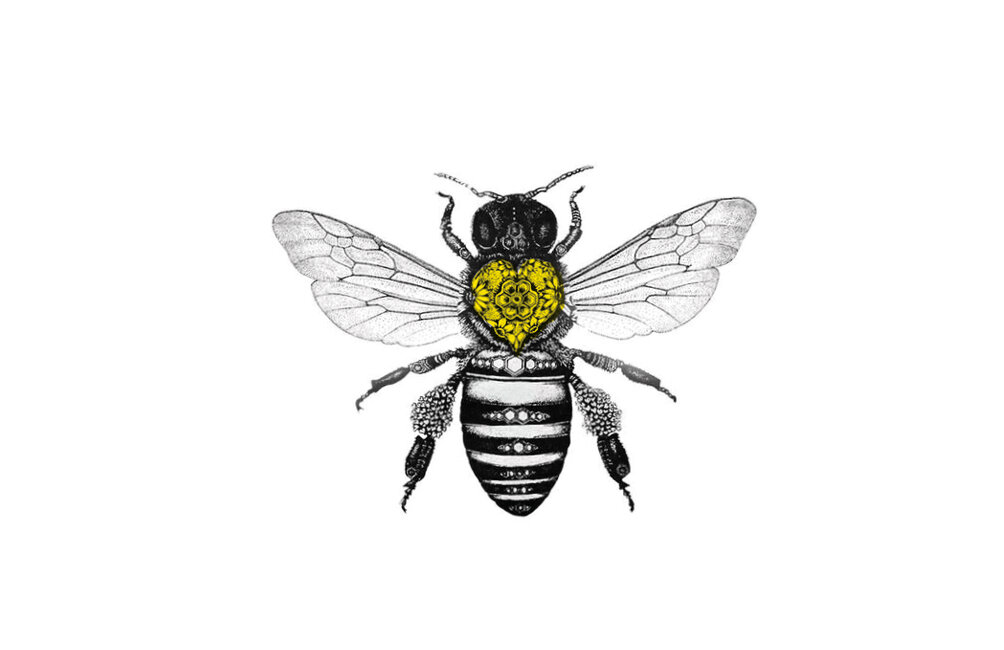MAKE NO MISTEAK
VICTOR PAUL BORG CONSIDERS THE SEVERE IMPLICATIONS OF MEAT CONSUMPTION ON OUR HEALTH AND PLANET.
Have you been concerned about the fires raging in the Amazon forest last summer, which caused a swathe of destruction unseen for two decades? Do you feel hopeless in the face of profligate nature destruction, and the threat to the world from the climate emergency?
There is one individual thing you can do that would make a difference: drastically cut down your meat intake or become vegetarian outright.
That’s not so radical, or aspirational. It’s a trend. In the past year meat has become the proverbial antichrist, and a concerted effort to turn us back into herbivores – as our ancestors where before they emerged from forests to roam savannahs – is gaining momentum.
The impact of meat consumption has been laid bare in the past year or so. For example, around 90% of deforestation for agribusiness in the Amazon is to clear forest for cattle changing. Cattle also release methane, one of the most potent gases causing climate change, and it’s been calculated that it’s impossible to halt climate change without drastically cutting down meat intake.
All of this was explored for the EAT-Lancet Commission earlier this year. The preeminent medical journal The Lancet teamed up with EAT, a nonprofit startup founded by a team of scientists in Sweden and France and Norway and worked with 37 leading scientists in 16 countries to produce the first global report for sustainable food systems.
The report – Food in the Anthropocene: the EAT-Lancet Commission on Healthy Diets from Sustainable Food Systems – catalogued the ravages of unhealthy diets on our health and the planet. On the one hand it charted the obesity epidemic – two billion people are currently overweight, putting a growing strain on healthcare systems. On the other hand, some 800 million people remain undernourished, even while a third of the food that’s produced worldwide goes to waste. Agriculture is responsible for the largest share of degradation of the world’s ecosystems.
“…around 90% of deforestation for agribusiness in the Amazon is to clear forest for cattle changing”
The mission of EAT is to foster healthy eating by 2050. That entails addressing the lopsidedness of diets – the overconsumption of meat and dairy foods by the rich, the over reliance on innutritious foods such as potatoes and cassava and bread by the poor. The EAT blueprint is based on a flexiterian diet dominated mostly by vegetables. It promotes a diet that is quasi vegetarian. And it sets targets. For example, in order to feed the world and save the planet, we can only allow ourselves around 300 grams of meat every week. At present, in Europe, we consume around a kilogram of meat per person weekly on average.
Adapting to the EAT diet means that the standard traditional tripartite meal of a chunk of meat, potatoes, and veg must be ditched. In then comes an array of creative dishes prepared in an increasing variety of ways. That could be anything from Asian-style dishes to modern inventions such as spiralised foods (it’s incredible how good raw vegetables taste when matched with the right sauces and spiralised to a pasta-like consistency).
There doesn’t seem to be any alternative. For example, although much hype has surrounded lab-grown meat, it has remained in the realm of experimentation. This is partly because of difficulties of moving to industrial-scale production of lab-grown meat; besides, meat is detrimental to health – red meat is a carcinogen, according to the United Nations – so the thinking is that there is no desirable alternative other than drastic reduction in consumption of meat. There has also been interests and experimentation with turning insects into foodstuffs such as burgers, but the cultural aversion seems insurmountable and industrial-scale production is also complex.
So, the efforts remains focused on reducing meat intake, and EAT, as well as many scientists, now advocate taxes on meats to make it pricey and shift people to a more vegetable-based flexitarian diet. Yet this has not been politically popular: politicians have shown an aversion to imposing unpopular taxes on meats.
I had asked the Department for Health Regulation whether taxes would be imposed on meats, and their response was equivocal: the director Charmaine Gauci admitted that “a combination of taxes and subsidies” can alter dietary habits, but then did not pronounce herself on whether taxes would be put on meats in Malta.
Parallel developments in the production of vegetable-based processed foods may offer a quicker fix. There are various companies involved in research and testing, and rolling out, of processed vegetative-based foods that mimic meats in bite and consistency and taste, as well as packing the required amounts of protein, infusion of protein.
The allure of these processed foods is that they fit well in hectic lifestyles, circumventing the greatest hurdle of vegetarianism, which entails time-consuming food planning and shopping, and creativity with cooking.
One of the main predicaments of feeding a growing world population with meat is that a significant percentage of arable land is used to grow grain to feed to livestock – that is why ninety-percent of Amazon forest is felled for cattle ranching. As livestock eat grains, there is a loss of energy in feed conversion ratio – the amount of vegetable feed needed to produce a kilogram of meat. This means the world would need less agricultural land to feed people if we were vegetarians, and we wouldn’t have the current problems associated with agricultural expansion – agriculture encroaching more deeply into natural habitats and forests, degradation of land and desertification due to intensive agriculture.
Something similar is also happening in fish farming. Most fish consumed by humans eat other fish, and there is a loss in meat conversion as we go up the food chain. This is most acute in tuna farming, which has the worst biomass conversion ratio of any farmed organism. Wild-caught tuna is fed mackerel in order to increase its fat content for more desired meat consistency, particularly for sushi and sashimi. Yet tuna eat around 20kg of mackerel just to put on a kilogram of weight, and this is a hugely wasteful considering that mackerel is perfectly edible. Imagine how many people can be fed by 20kg of mackerel as opposed to 1kg of tuna.
Malta has the highest capacity of tuna farming in the world.
RECIPES
Green pizza
Serves 4-6 - Time 1 hour + preparation time
For the pizza base:
40 g fresh yeast
400 ml water at room temperature
400 ml plain flour
400 ml whole meal flour, finely sieved
4 tbsp olive oil
1 tsp salt
For the topping:
200 ml tomato sauce
2 red onions
1 yellow pepper
1 green pepper
1 sweet pepper
½ broccoli
½ cauliflower
200g grated cheese
2 tbsp olive oil
Salt flakes
Small salad leaves and/or basil to garnish
Method
Crumble the yeast into a baking bowl, pour over water and stir until the yeast has dissolved. Add the plain and whole meal flour and quickly work the mixture into a dough. Add the olive oil and salt and knead the dough for 10-15 minutes, until it is smooth and elastic (kneading at full speed for the last few minutes). Cover the baking bowl with cling film and put a tea towel over the top. Leave the dough to rise until it has doubled in volume. Peel and cut the onion and pepper into thin slices. Break the broccoli into small florets and shred the cauliflower.
Heat the oven to 220 degrees. Fold the dough together and divide into two equal-size portions. Roll each portion out into two pizza bases, transfer them to a baking tray covered with greaseproof paper. Spread the bases with tomato sauce and sprinkle with the cheese and cauliflower. Add the onion, pepper and broccoli. Drizzle with olive oil and sprinkle with a few flakes of salt.
Cook the pizza on the middle shelf until the vegetables are soft, the surface is golden and the base is baked. This should take about 20-25 minutes.
Chilli con carne with “cauliflower rice”
Serves 4 - Time 2 hours approx.
You will need:
400g chuck steak
1 large onion
1 red pepper
1 green pepper
400g plum tomatoes
2 cloves of garlic
1 red chili
1 tsp ground coriander
1 small cinnamon stick
2 tsp ground cumin
2 tsp paprika
2 tsp chili powder
2 tbsp tomato purée
1 tbsp brown sugar or liquid honey
300ml beef stock/broth
300g brown beans, cooked
2 tbsp dark chocolate (at least 70%), grated
1 cauliflower
4 tbsp rapeseed oil or mild olive oil for frying
Salt and ground pepper
To serve
Natural yoghurt or sour cream
Chopped fresh parsley and/or coriander
Method
Cut the meat into small pieces. Peel and chop the onion and the peppers into even-size pieces. Remove the stems from the tomatoes and chop. Thinly slice the chili and garlic. In a thin-bottomed pan, fry the onion, chili and garlic in 2 tablespoons of oil. Add the dried herbs and the meat. Fry until the meat has browned. Stir in tomato purée and add tomatoes, paprika, stock/broth, sugar and a good pinch of salt. Bring to the boil, cover with a lid and leave to simmer for an hour, stirring occasionally. Remove the lid and leave to simmer for another half an hour, or until the meat is tender. Add salt and pepper to taste.
Thoroughly rinse the beans in water and stir them into the mixture towards the end of the cooking time. Grate the chocolate and stir it in right at the end (possibly saving some for sprinkling on before serving). Wash and grate the cauliflower or break it into rough pieces and blend it in a food processor until it resembles rice (or small grains). Heat a large frying pan containing 2 tablespoons of oil and fry the cauliflower rice for 3-4 minutes, stirring regular. Add salt and pepper to taste.
Victor has published more than one million words, as well as hundreds of pictures, all published in books and magazines and newspapers in every corner of the world.




